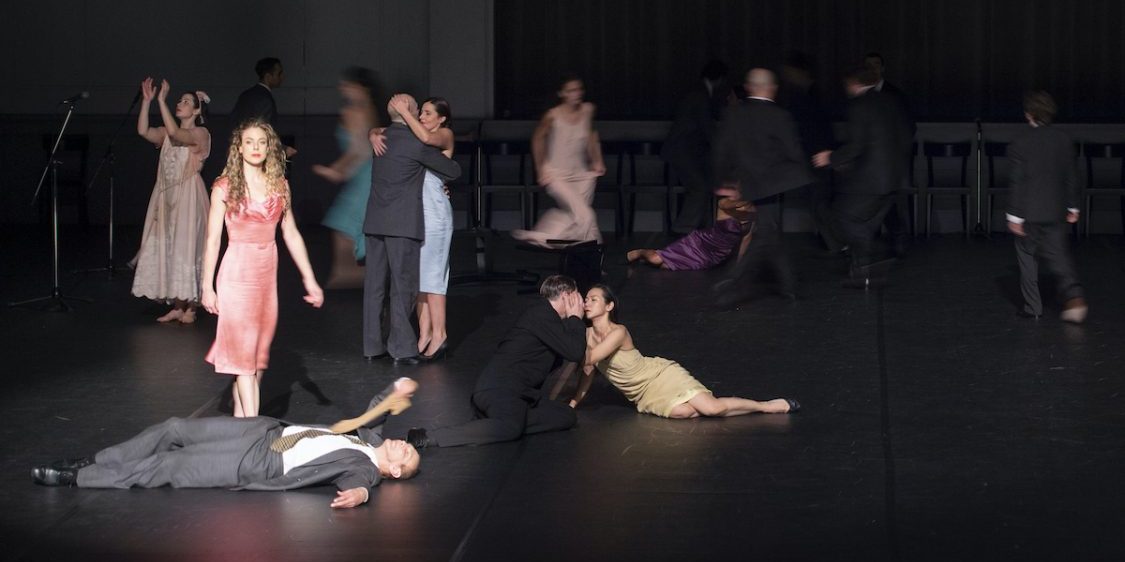‘Kontakthof’ (Courtyard of Contact) was one of the breakthrough works of the celebrated German dance innovator, Pina Bausch. Dating from 1978 and first seen at Sadler’s Wells in 1982, it is built on a grand scale – running to three hours overall. It was one of the first of her works to bear the hallmarks of her mature style – an improvisatory approach, more a collage of episodes than any kind of narrative, where the creative initiative often came from the dancers themselves responding to questions and promptings from the choreographer. Some overarching themes shine through: a focus on relationships and how they are built, abused, and deconstructed; a contrast between formal polished cool surfaces and primal desires breaking through; and a willingness to embrace speech, film, and song as much as pure dance in order to evoke a full spectrum of theatrical effects. She explores in depth the paradox between the absence of story and the presence and evocation of drama through pure, abstract dance relationships.
The set is a plain, even drab, community hall, the sort of location you would expect for theatre auditions – the context which gave rise initially to this project. Over twenty dancers, equally divided between men and women, sit at the back all very formally dressed – suits for the gents and colourful gowns for the ladies. Their ages range from young to middle-aged (this show has in the past been reconfigured for both the very young and those over 65). Each comes to the front and presents poses to us as if we were an auditioning panel. Music begins, mainly German popular songs and dance music from the inter-war era, the sorts of numbers recently revived with extra polish by Max Raabe, but here in their original incarnations. The mood is elegant but with plenty of rhythmic variety provided by tango and ragtime.
What follows is a long process in which all the elements of human ‘contact’ are explored either collectively or in separate couples or individual self-assertion. There is a superfluity of invention on show and with the benefit of forty years’ distance, you do wonder whether some editing might have helped in a show that seems more or less complete in its trajectory after two hours. But the emotionally and physically taxing routines receive hugely impressive and dynamic performances from the dancers, most of whom are new to the material. Alongside the undertow of serious drama, there is also a great deal of visual humour that was much appreciated by the packed press-night audience.
‘Kontakthof’ seems especially poignant and resonant in our own times when we are only just beginning to resume contacts, physical and emotional, in the wake of the pandemic. So this production seems all the more welcome and apposite in the way it dramatizes attempts by individuals to escape from constraint and restriction. The concerted dance sequences are quite simple in their technical demands, as you might expect given the dance hall setting; but each of the performers has plenty of opportunities then to express their own individual creativity in escaping those disciplines while demonstrating their own patterns of growth and distinctive attempts to connect with the others around them. Although there is no overall narrative shape we do feel we know the full personalities and rich stories of each of the individual dancers much better at the end.
This evening is therefore a fine example of the power of dance to express individual creativity alongside a depiction of broader, shared collective yearnings for contact and togetherness. There is tenderness, and there is violence, and vast emotional variety, all held together within an elegant and deeply thought-through expressionist concept.

